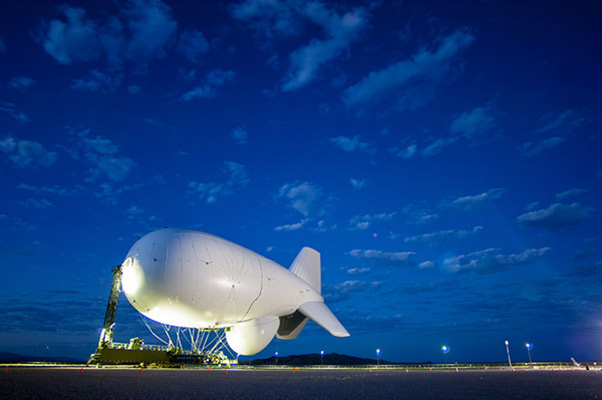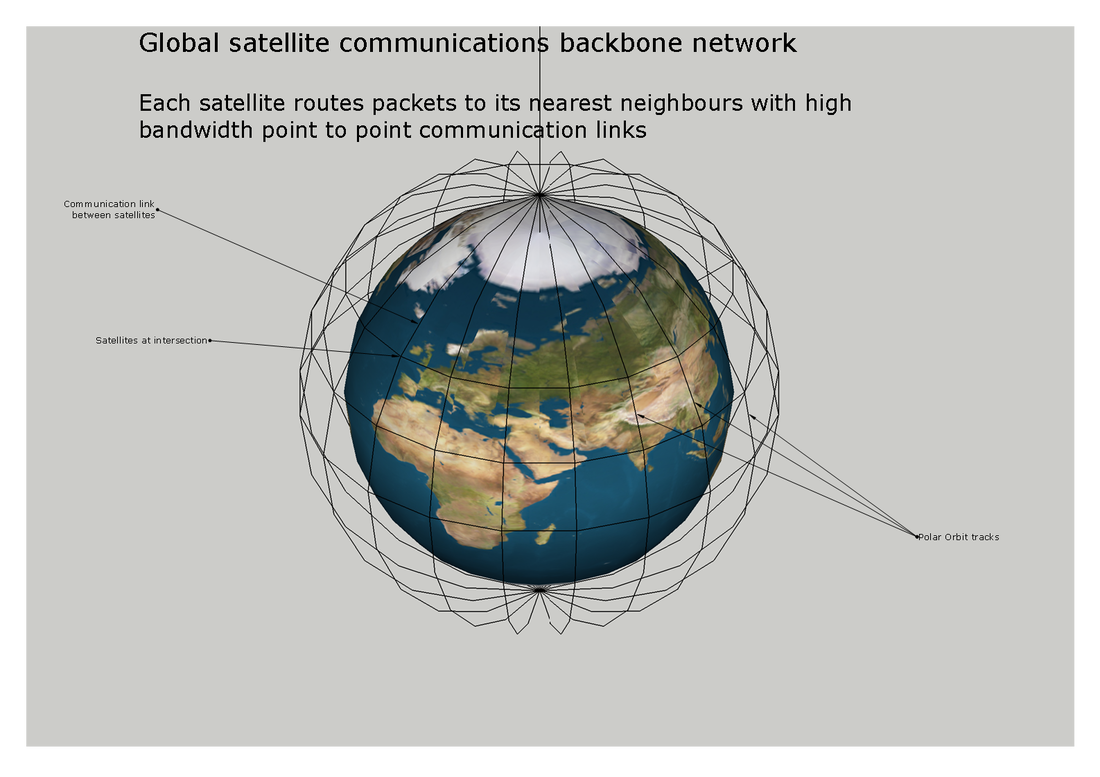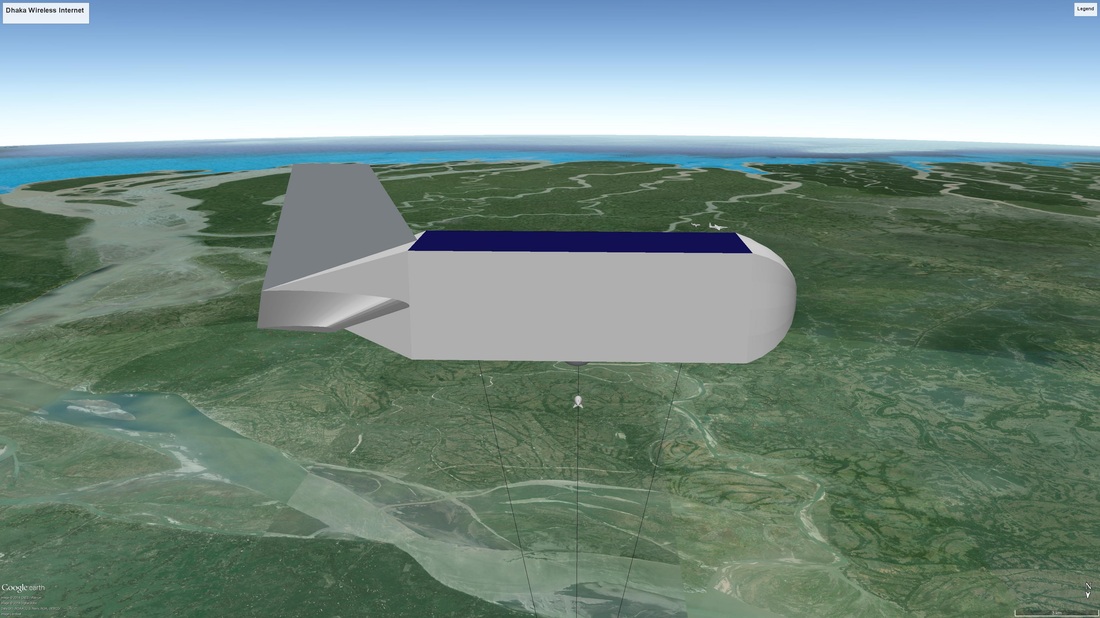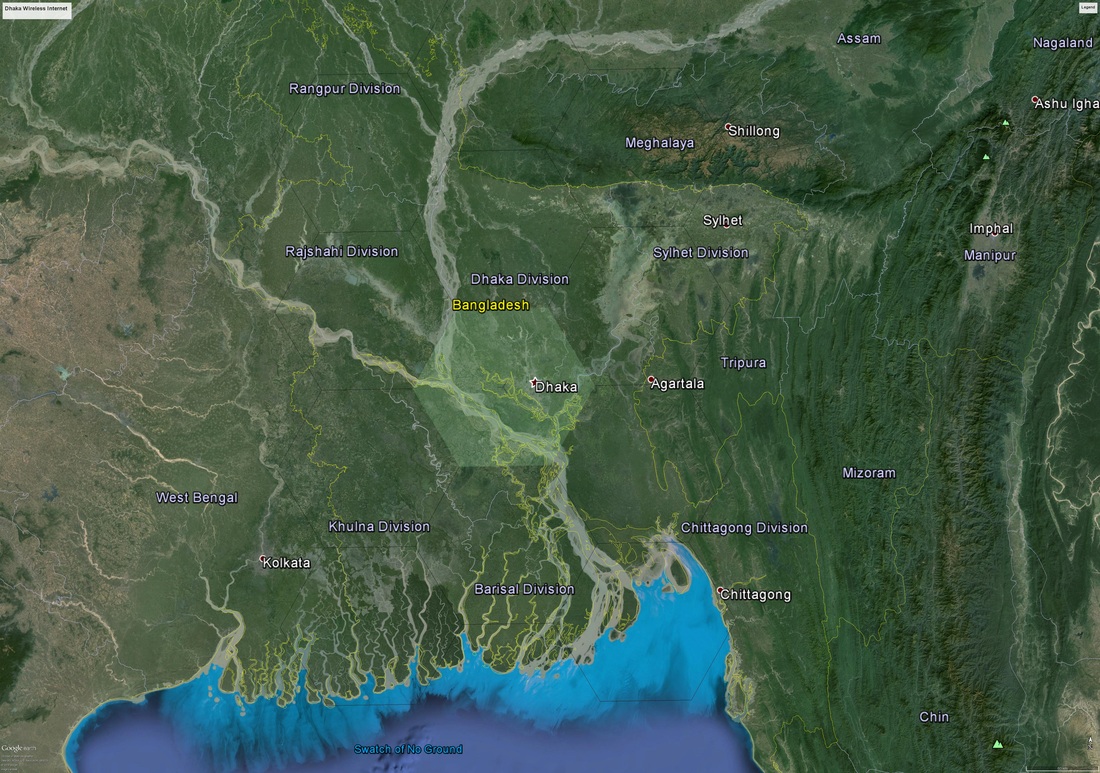|
Aerostat breaks loose
This story has attracted some attention. While seemingly negative about the safety of tethered platforms it actually illustrates one of the central reasons why tethered StratoSolar platforms work reliably by demonstrating why tethered platforms in the troposphere do not work reliably. The air force JLENS aerostat was tethered at about 10,000 feet in the troposphere and the tether broke in a gust of wind during a storm. The story said the wind exceeded 100 MPH and given the nature of wind gusts it probably was a lot more than 100 MPH. The force that broke the tether was a combination of the wind acting on the tether and the wind acting on the aerostat, with most of the force coming from the force acting on the aerostat. Winds in the troposphere can exceed 200MPH, and aerostats are only meant to be operational in up to about 60MPH winds. Many military aerostats are lost to unpredictable winds. This was just a very public demonstration. In comparison, the worst case wind speed in the stratosphere is about 90MPH and the air is a lot less dense with the result that the worst case wind force is more than a factor of ten lower in the stratosphere. Also there are no storms in the stratosphere so wind force is steady there are no gusts and no vertical wind shear. This relatively benign environment means that StratoSolar platforms can easily handle the worst case winds in the stratosphere and can be permanently stationed there. If the JLENS system were deployed on a StratoSolar platform at 20km altitude, as well as being able to stay permanently aloft in all weathers, it would be able to see more than twice as far and thus be considerably more effective as well as far more reliable and available. This also demonstrates the difficulty of gaining acceptance for novel ideas. The operational benefits to air defence of a StratoSolar based JLENS are so significant, it would be expected that it would at least get some serious attention. The conventional wisdom cannot see the possibility of the novel and has no motivation to do so. By Edmund Kelly
Comments
A StratoSolar platform’s unique capability to enhance emerging satellite Internet communications9/29/2014 Google and Facebook have both publicly announced they plan to spend billions on satellite communications to bring internet access to the developing world. Recent departures from Google of key personnel associated with Google's satellite communications effort shed some light on the reality of what is happening at Google and elsewhere. These efforts are very real and have implications far beyond internet access for the developing world.
Apparently a team that Google had hired from O3b including Greg Wyler, Brian Holz and David Bettinger have recently departed Google and are the founders of WorldVU a satellite internet start up aiming to launch 360 satellites into 800 km and 950 km polar orbits starting in 2019. WorldVU has the rights to 2 GHz of KU band (12-18 GHz). Satellites will fly in 20 planes each with 18 satellites providing complete world internet coverage. Also, Michael Tseytlin, another satellite executive previously at Google recently joined Facebook’s connectivity lab. This article implies he has some authority. While these departures imply some confusion at Google, their recent purchase of Skybox means they now have in house capability to design and deploy satellites. Skybox has made and launched small satellites for imaging. This has obvious tie ins with lots of Google mapping and geographical information efforts but this expertise could also be leveraged for telecommunications. So it appears that there are three very serious efforts to launch low earth orbit constellations of satellites for internet communications. WorldVU, Google and Facebook are publicly each spending billions on their individual efforts and the movement of the key individuals mentioned previously backs up the reality of their statements. These are the early participants in what may turn into a new wild west in space as the broader implications of this emerging technology become apparent. Obvious examples of companies with both the financial resources and business need to compete are Apple and Microsoft. The public focus of these efforts at the moment is on the satellite to ground links that provides Internet access to the developing world, but the implications of the technology are potentially far more significant than that. The point to point communication links between satellites together form a private, high bandwidth, global, secure, reliable, backbone communications network that is independent of any nation. Based on free space optical (FSO) links and/or high frequency point to point microwave links the bandwidth of this backbone in space could eventually surpass that of the terrestrial internet backbone. Nations can control communications from the satellites to the ground but not point to point communication between satellites. Discussions of satellite communication for the developing world usually focuses on the customer end but an equally important aspect is the backhaul communications to the internet backbone. Backhaul relies on high bandwidth wireless communication between satellites and complex ground stations connected to the Internet backbone. This communication needs expensive, scarce and highly regulated bandwidth and expensive and complex ground stations. This is where StratoSolar platforms can offer a unique capability not possible with Loon, drones or High Altitude Airships. Because they are above most of the atmosphere, the same (unregulated) free space optical (FSO) links or high frequency microwave links used to communicate between satellites can communicate reliably with a receiver on a StratoSolar platform that then forwards the communications down high bandwidth fiber optic links attached to the tether. The tether is a unique attribute of StratoSolar platforms that is usually seen as a negative, but for this application it is a big positive. This connects the backbone in space directly to terrestrial backbone networks with the same private, high bandwidth, secure, reliable, communications. StratoSolar platforms can be situated near convenient connection points to the backbone or data centers. When thought of as data center connections, the ability of the platforms to also provide reliable 24/7/365 power to the data centers would allow more flexibility in data center location and less dependence on external energy infrastructure or logistics like fuel supply. This vision of an internet backbone in space seems an entirely plausible consequence of the coming low earth orbit satellite networks and the unique capabilities of the StratoSolar platform and its tether would make the case even stronger. By Edmund Kelly Google and Facebook have raised awareness of alternative strategies to get Internet service to the other three billion (O3B) without internet access in the developing world. Their motivations are not altruistic. The O3B are their future customers. Google is pursuing balloons with the Loon project, high altitude drones with its purchase of Titan, and satellites with its announcement that it plans to deploy a constellation of 180 medium earth orbit satellites. Facebook has announced it is deploying satellites and purchased Ascenta, a drone company.
A quick look at internet statistics shows that the majority of those without an Internet connection are in Asia, about 2.8 Billion. A look at land areas in the countries that account for the bulk of the market shows that population densities are very high. This combination requires a high total bandwidth over relatively small land areas. We call this a high bandwidth density solution. Current and proposed satellite solutions can only provide low bandwidth density. Similarly Google Loon and high altitude drones have very small payloads and can only provide low bandwidth density. All these technologies are years from deployment and have difficulty with a low $1.00/month price. We propose a high bandwidth density StratoSolar platform wireless Internet solution using stratospheric permanently tethered platforms. A platform tethered at 20km altitude can provide reliable wireless internet service to a radius of about 75km, which is an area of about 15,000km2. For the population density in Asia, a wireless internet platform solution covering an area of 15,000km2 needs to provide enough bandwidth for from about 1,000,000 to 8,000,000 customers, or up to a total of about one terabit per second for broadband access. A crude analysis to scope the problem yields a platform count of about 1,100 for Asia. In most cases there are low population density areas that would be best served with low bandwidth density solutions like satellites, so the number of platforms would be less (perhaps 600). This is especially true for China. There would also be very high bandwidth density areas in urban cores where the wireless platform bandwidth density would be insufficient to satisfy the entire market. We propose a quickly deploy-able solution based on existing hardware and software currently being used by the rapidly growing wireless internet service provider (WISP) market that uses the unlicensed radio bands. As is currently done with satellites we propose to provide very large overall bandwidth by using many spot beams with massive frequency re-use. The solution can be thought of as a WISP with a very tall tower that supports a lot of antenna. With highly directional antenna at both the platform and the customer the link budgets are conservative and the interference requirements of the unlicensed bands can be met. We would envisage from about 271 to 1000 cells per platform, providing broadband Internet access to from 1,000,000 to 8,000,000 customers. The aggregate cell throughput exceeds 1Gb/s. The large payload, large antenna support structure area, and large continuous PV power with gravity energy storage provided by the platform are what enable the rapid deployment of this platform composed largely of off the shelf wireless internet and internet switch hardware. The off the shelf wireless hardware and the antenna are not designed for miniaturization and weigh several tonnes and consume several kW of power. The major impediment to deployment is political. Each country will be different. The only physical problem is the hazard that tethers pose to aviation, which can be handled by the airspace regulator of each country. Commercial aviation in Asia is very small and general aviation is almost non-existent compared to the US and Europe. The politics of communications infrastructure are harder to gauge. China may be a non starter. The initial goal is to get one country to deploy one platform. The economics are very favorable and would provide internet service at prices that most households in Asia could afford . If the average platform has 4,000,000 customers at $1:00/month, that is $48M/year income for a platform that costs about $4M including the wireless hardware. Customer premises equipment (CPE) would be about $25 or less per customer. $25 is a lot of money in large parts of the target market, so reducing CPE costs and methods of financing CPE are important. From an individual countries perspective, internet service deployment can occur without much investment and in a timeframe dictated mostly by customers. High altitude platforms will deploy in less than a week once airspace is approved. Coverage for a country could be deployed in less than a year. Initially a backbone internet could be provided with wireless or FSO links between platforms. Once a platform is deployed customers can buy or rent CPE and be on the internet immediately. They will need electricity, but that might come from a PV panel and a battery in an isolated area. A local wireless base station could provide Wi-Fi internet to a village. By Edmund Kelly |
Archives
December 2023
Categories
All
|
|
© 2024 StratoSolar Inc. All rights reserved.
|
Contact Us
|





 RSS Feed
RSS Feed